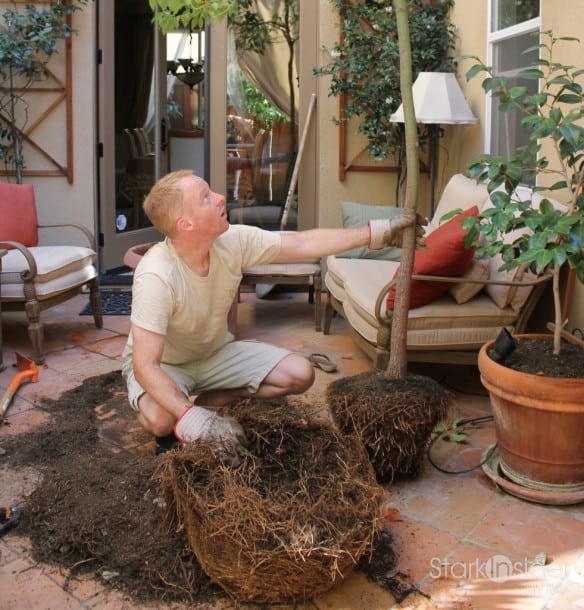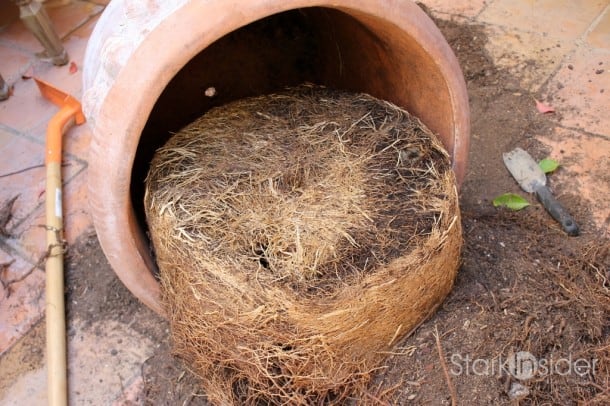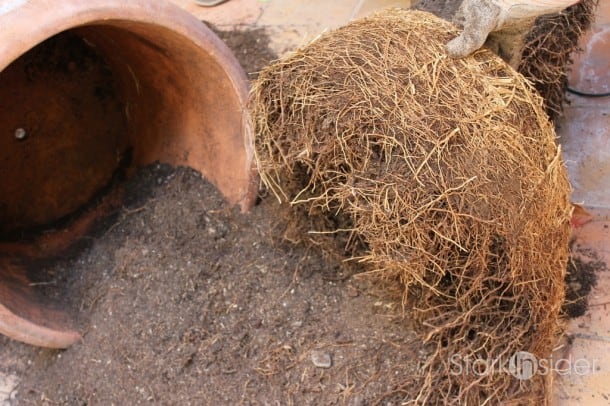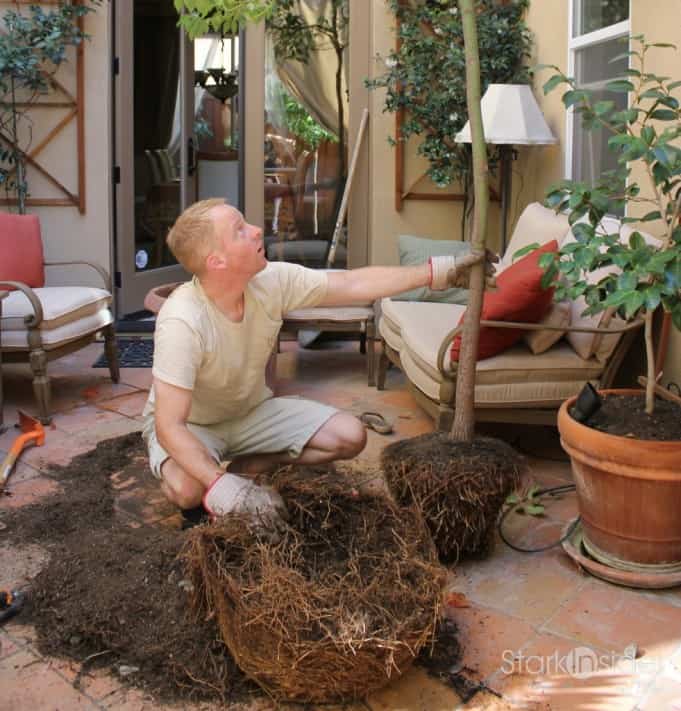
We have a Camphor Tree in a large terracotta container in our courtyard that I adore. We’ve had it for the last 7 years and it adds a nice dappled shade to the area in the hot summer months. I like to sit under it and read or just day dream.
I had purchase the Camphor Tree against the advice of the experts at the nursery. This was 7 years ago so I was perhaps a little foolhardy. Among the rows of trees, I had spotted it. Loved the leaves, the shape and the fact it was evergreen and no cautionary tale about the size this tree actually grows to in nature was going to dissuade me from my selection.
…And for 7 seasons, it served me well. This season, though, many of the branches started to look brittle and eventually turned black and fell off. Disheartened, I had a feeling the days were numbered for my beautiful Camphor Tree. Then, on another visit to a nursery in search of Munstead lavender, I was introduced to the term “root pruning.”
Although I am showing the process for a Camphor tree, root pruning is important to perform on your container-grown fruit trees as well every three to five years. In fact, any tree showing signs of reduced vigor after several years may be an indication that it is root-bound.
The idea is that as plants or trees grow in containers, their roots also grow. There are two main types of roots, those that the tree uses to hold itself in place and those that it uses to gather nutrients and water. The latter are the younger roots. As a tree grows, the container gets crowded with roots that get old and serve to stabilize the tree structurally. This makes sense… in nature with infinite soil, a tree should invest in large roots to help it grip onto the earth should a fierce wind try to blow it over. In a limited sized pot, the younger, nutrient gather roots are crowded out and in search of places to go, the roots literally chase their tail and become “root-bound”. Root pruning involves severing a portion of the roots so that it promotes growth of young roots.
I wasn’t sure if root pruning would work. But seeing that the tree would die otherwise, there was no risk in trying. After a couple of weeks, from the surgery outlined below, I am happy to report my Camphor tree is doing well.
The main tools you need are a drain shovel and a willing spouse. Also after you remove a large mass of the root system, you will want to replace the old soil with fresh, nutrient-rich soil.







Anyways, I just wanted to share our experience should you find yourself in a similar situation. After we replanted the tree, we have been making sure the soil is consistently moist. With so much root mass loss, your tree or plant will be especially vulnerable to dryness and lack of nutrients until it starts growing back its root system. I use a gentle solution of water and dissolved fertilizer and make sure to feed the tree every day. I plan to do this for at least the next 6 months.
I figure I will need to do this process again in about 3 years.


